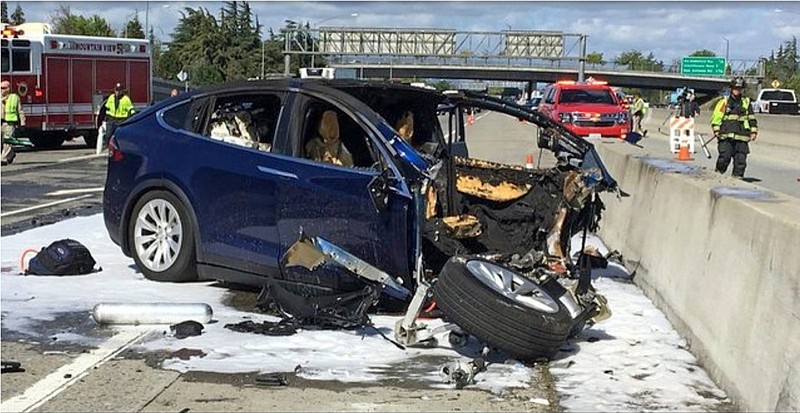When an auto accident occurs, whether big or small and with or without injuries, it can take several people and agencies to deal with everything from redirecting traffic to dealing with the injured and cleaning up the mess.
In a perfect world, those responding are well-trained professionals who know how to handle situations such as chemical spills from the vehicles and vehicles so damaged they have to be towed. The lithium-ion batteries in electric cars have introduced a new potential danger that police and fire departments, as well as towing and wrecker services, are just now beginning to grapple with, according to Chattanooga Police Department Beer & Wrecker Officer John Collins.
"This is something brand new that I wasn't even aware of a month ago," Collins told the Chattanooga Beer & Wrecker Board during its July 1 meeting. His comments came at the end of the meeting as part of an early, informal discussion on possibly updating the city's Wrecker Ordinance and Guidelines for Wrecker Violations.
The batteries, if damaged, can get wet and explode or catch fire, and if they do the vapors can be extremely hazardous. Traditional lead-acid batteries can be and often are recycled, but that is not the case with the lithium-ion versions.
They are larger and heavier than those in regular cars and made up of several hundred individual lithium-ion cells, all of which need to be dismantled. They also contain hazardous materials and can explode if disassembled incorrectly.
Some area towing companies and salvage yards are not aware of the problem.
"We haven't towed any electric cars," said Brad Parker of Parker Auto Sales & Towing on Ringgold Road, "and I am not aware of this."
Chattanooga has contracts with about 30 companies who are paid by the city to pick up abandoned, wrecked or inoperable vehicles on city, state or federal roads within the city. These are towed to one of 35 yards owned by the wrecker companies. If the battery or battery compartment of an electric vehicle is damaged, it can explode, if wet, or catch fire, which creates a hazardous gas.
Chattanooga Fire Department spokesperson Lindsey Rogers said the department is deeply concerned.
"There are unique hazards involving these types of vehicles," she said in a written statement. "It's concerning when the battery compartment catches fire, as it can create hazardous vapors. We want our firefighters to be well versed in what precautions need to be taken to protect the public and first responders."
According to Rogers, not only are leaked vapors hazardous, putting out an electric car fire takes a lot of resources.
"For example, a Tesla fire in Texas took more than 30,000 gallons of water in four hours to extinguish because of the heat the fire creates," she said. "That's 15 tankers. A typical car fire takes around 30 minutes to handle and around 500-1,000 gallons of water.
"Once they get to the wrecker yard, electric cars can still be dangerous after the accident. There could be incidents where the vehicle could spark a fire."
She said the problem is being addressed nationally and "the Chattanooga Fire Department is prepared to tackle the challenge as this kind of technology evolves. We will respond and do our best to mitigate any emergency."
"These vehicles are safe, but when an incident happens, they have to be handled in a different way because of the materials involved," said Capt. Robert Thompson with the fire department's Special Operations Division. "We are currently working with city, county and state responders on this issue on how to respond in a timely and safe manner."
Rogers also said that while the fire department has not responded to any incidents involving electric vehicles, it has done training and will continue to train on how to respond to car accidents and car fires involving them.
"We know that it's not 'if,' it's when," she said.
Contact Barry Courter at bcourter@timesfreepress.com or 423-757-6354.
